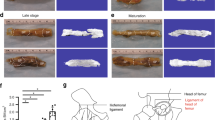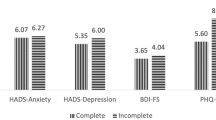Abstract
Study Design:
Retrospective chart review.
Objectives:
The present study was performed to analyze the impact of ankylosing spondylitis (AS) in developing heterotopic ossification (HO) in patients following spinal cord injury.
Setting:
Department of Spinal Cord Injury and Department of General and Trauma Surgery, BG-University Hospital Bergmannsheil Bochum, Ruhr-University Bochum, Germany.
Materials and Methods:
Between January 2003 and December 2015, 67 patients with AS and SCI were included in the study. The control group consisted of 141 patients with SCI and without AS. The definitive diagnosis of HO was made via magnetic resonance imaging or computed tomography. Primary outcome measure was to analyze the impact of AS on the development of HO.
Results:
Fifteen out of 67 AS patients (22.4%) had a diagnosed HO. In the control group, 28 of 141 patients (19.9%) suffered from HO. Patients with AS had no significant higher risk for HO development compared with patients without AS (RR=1.16; 95% CI=0.65–2.09). However, patients with a complete neurological deficit had a twofold higher risk for HO development (RR=2.55; 95% CI=1.26–5.16).
Conclusions:
AS does not increase the risk for HO development in patients with spinal cord injury.
Similar content being viewed by others
Log in or create a free account to read this content
Gain free access to this article, as well as selected content from this journal and more on nature.com
or
References
Citak M, Suero EM, Backhaus M, Aach M, Godry H, Meindl R et al. Risk factors for heterotopic ossification in patients with spinal cord injury: a case-control study of 264 patients. Spine 2012; 37: 1953–1957.
Wittenberg RH, Peschke U, Botel U . Heterotopic ossification after spinal cord injury. Epidemiology and risk factors. J Bone Joint Surg Br 1992; 74: 215–218.
Estrores IM, Harrington A, Banovac K . C-reactive protein and erythrocyte sedimentation rate in patients with heterotopic ossification after spinal cord injury. J Spinal Cord Med 2004; 27: 434–437.
Zhang F, Chen W, Zhang Q, Liu S, Zhang Y . Incidence and risk factors for heterotopic ossification after total hip arthroplasty: a meta-analysis. Arch Orthop Trauma Surg 2015; 135: 1307–1314.
Larson JM, Michalski JP, Collacott EA, Eltorai D, McCombs CC, Madorsky JB . Increased prevalence of HLA-B27 in patients with ectopic ossification following traumatic spinal cord injury. Rheumat Rehabil 1981; 20: 193–197.
Garland DE, Alday B, Venos KG . Heterotopic ossification and HLA antigens. Arch Phys Med Rehabil 1984; 65: 531–532.
Maynard FM Jr., Bracken MB, Creasey G, Ditunno JF Jr., Donovan WH, Ducker TB et al. International Standards for Neurological and Functional Classification of. Spinal Cord Injury. American Spinal Injury Association. Spinal Cord 1997; 35: 266–274.
Cummings P . Methods for estimating adjusted risk ratios. Stata J 2009; 9: 175–196.
McNutt L-A . Estimating the Relative Risk in Cohort Studies and Clinical Trials of Common Outcomes. Am J Epidemiol. 2003; 157: 940–943.
Efron B . Nonparametric estimates of standard error: The jackknife, the bootstrap and other methods. Biometrika 1981; 68: 589–599.
Harrell FE . Regression Modeling Strategies, 1st edn. Springer-Verlag New York, Inc: Secaucus, NJ, USA. 2001; ISBN: 0387952322.
Stausberg J, Kiefer E . Classification of pressure ulcers: a systematic literature review. Stud Health Technol Inform. 2009; 146: 511–515.
Thilak J, Panakkal JJ, Kim TY, Goodman SM, Lee SS, Salvati EA . Risk Factors of Heterotopic Ossification Following Total Hip Arthroplasty in Patients With Ankylosing Spondylitis. J Arthroplasty 2015; 30: 2304–2307.
Zhu Y, Zhang F, Chen W, Zhang Q, Liu S, Zhang Y . Incidence and risk factors for heterotopic ossification after total hip arthroplasty: a meta-analysis. Arch Orthop Trauma Surg 2015; 135: 1307–1314.
Putnis SE, Wartemberg GK, Khan WS, Agarwal S . A Literature Review of Total Hip Arthroplasty in Patients with Ankylosing Spondylitis: Perioperative Considerations and Outcome. Open Orthop J 2015; 30: 483–488.
Treasure T . Hypertrophic pulmonary osteoarthropathy and the vagus nerve: an historical note. J R Soc Med 2006; 99: 388–390.
Spicknall KE, Zirwas MJ, English JC . III. Clubbing: an update on diagnosis, differential diagnosis, athophysiology, and clinical relevance. J Am Acad Dermatol 2005; 52: 1020–1028.
Kozak KR, Milne GL, Morrow JD, Cuiffo BP . Hypertrophic osteoarthropathy pathogenesis: a case highlighting the potential role for cyclo-oxygenase-2-derived prostaglandin E2. Nat Clin Pract Rheumatol 2006; 2: 452–456.
Atkinson S, Fox SB . Vascular endothelial growth factor (VEGF)-A and platelet-derived growth factor (PDGF) play a central role in the pathogenesis of digital clubbing. J Pathol 2004; 203: 721–728.
Author information
Authors and Affiliations
Corresponding author
Ethics declarations
Competing interests
The authors declare no conflict of interest.
Rights and permissions
About this article
Cite this article
Ohlmeier, M., Karras, P., Suero, E. et al. Ankylosing spondylitis does not increase the risk of neurogenic heterotopic ossification in patients with a spinal cord injury: a retrospective cohort study. Spinal Cord 55, 213–215 (2017). https://doi.org/10.1038/sc.2016.143
Received:
Revised:
Accepted:
Published:
Issue date:
DOI: https://doi.org/10.1038/sc.2016.143



